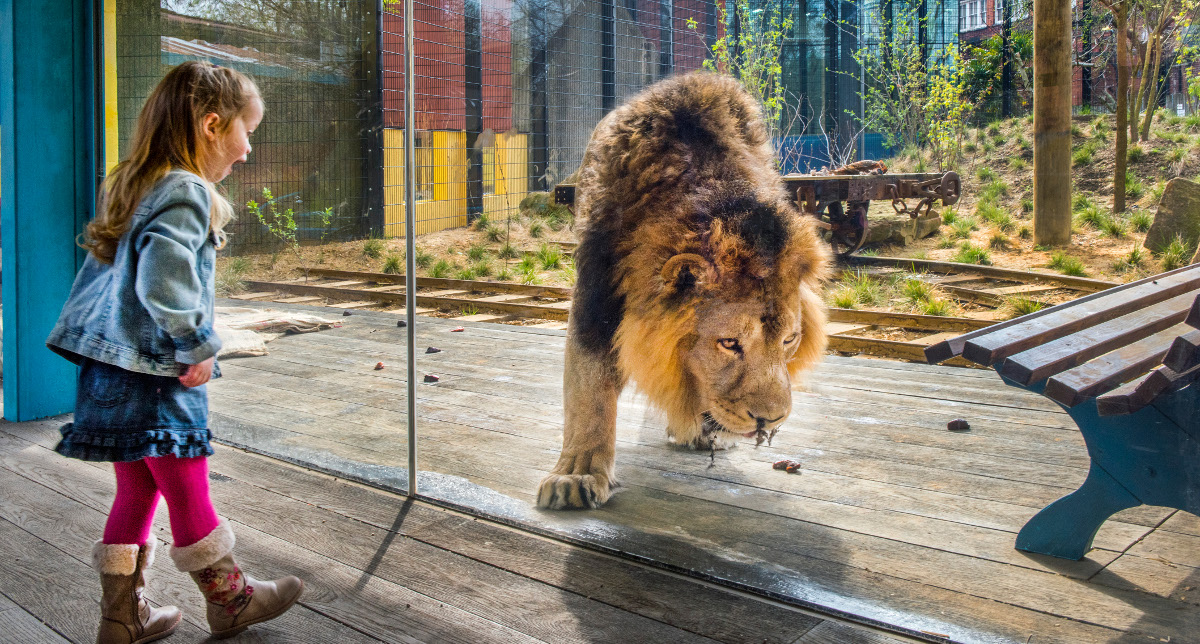When I look back on my childhood, the family trips to various zoos seem up there with the best of my memories. We would watch the animal species that I’d only read about, and eat ice cream whilst we laughed at penguins swimming before our very eyes. I’d lie awake at night flipping through the pages of my animal encyclopaedia, and seeing the wild creatures in reality only furthered the vibrancy with which I dreamed, thought, and learned about them. Over the years, however, my opinions have been shaped significantly as I have become more aware of the reality. The recent closure of the South Lakes Safari Zoo in Cumbria has particularly underlined the importance of deciding where I stand on the issue of animal confinement. Is it with the humans, tapping on the glass of a glorified cage and waiting for a monkey to send a weary glance my way, or with the beautiful creatures that ache to be in the wild?
Many animal experts would say that the morality of confining an animal within an enclosure is linked to the intentions behind the construction. The recent disclosures regarding the South Lakes Zoo, which has seen 500 animal deaths in less than four years, clearly accentuate this concern. It embarrasses me that I’ve actually visited this park as a child and given it my indirect support, although I do recall questioning the practice of animal confinement, even though the norm of seeing animals behind bars was programmed into me. I remember watching hundreds of people crowd at a tiger’s feeding time, which had been transformed from a necessity into an attraction – one of Mother Nature’s most ferocious animals hemmed in; dependent on our power. It seemed grossly unfair. In May 2013, a zookeeper died at the hands of this attraction, which surely should be a sign that maybe, this is more unnatural than it is exciting? Abusing our power for this form of entertainment should be a practice called into question, particularly as it goes against the nature of many species (such as the gorilla; a primarily private animal). If you adapt the characteristics of animals to fit into our anthropocentric world view, then you aren’t protecting any aspect of that creature, least of all its right to act in the way that is natural.
Another traumatising factor arising from the revelations about this Cumbrian zoo is the consequences of overcrowding – making the so-called attraction appear increasingly like an animal prison. Seven lion cubs were euthanized at the hands of the zoo, in a desperate attempt to ‘make room’ for their existing repertoire. Squeezing limited available land to breaking point does not fill any animal activist with positivity; it reduces what should be, in theory, a place of refuge for the endangered and vulnerable, into little more than a ‘battery farm’. Furthermore most species put behind glass screens aren’t endangered in the first place, but are simply presented to us in an attempt to educate – a highly irrelevant process in the light of TV and the animal programmes displayed in the comfort of our front rooms. Surely we should now leave our Victorian methods behind and let the wild stay wild in their natural habitat, whilst we do the same in our own, watching David Attenborough on our screens whilst we pop the kettle on.
PETA, who put wildlife at the forefront of their sights, reprimand zoos for their commoditisation of the wild, restricting animal behaviour instead of channelling efforts into conservation of existing habitats. Limiting the behaviour of creatures to a small and controlled space gives rise to physical and mental frustrations that in turn leads to destructive behaviour. This was well illustrated in Cumbria by Saka the Snow Leopard, driven by extreme agitation to chewing off her own paw as a result of her limited existence. To me, this seems like the saddest eventuality for a creature that should be running alongside her own in Asia. I can appreciate, with an open mind, that for some species, protection in a zoo is at a critical point in their timeline (most likely as a result of human action), such as the White Rhinos of San Diego Zoo. I do fail to understand however, why we feel the need to award ourselves a gold star for this and then consider the job done. It is not justifiable to ignore the need to make the environment hospitable once again.
In 2004 the World Conservation Union declared that biodiversity is declining at an alarming rate, due to factors such as climate change, habitat destruction, and pollution. None of these factors are addressed by Zoo ‘protection’. Pumping the equivalent amount of money into conservation efforts, led by charities such as the Born Free Foundation, does seem like an ideal alternative solution. We need to rethink and reimagine the way with which we perceive our power over other species, and our right to manipulate the natural path of life. Our current solution to animal vulnerability appears a little like the concept of treating a life threatening illness with a couple of paracetamol – inherently useless.
Emily Merrill
(Image courtesy of: http://www.themanufacturer.com/articles/roaring-success-for-new-romag-glass-viewing-screen-at-london-zoo/)

